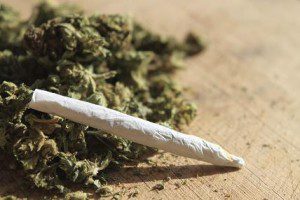As marijuana use and potency increases, the demand for treatment for cannabis use disorder is on the rise. Frances Levin, MD, Kennedy Leavy Professor of Psychiatry at Columbia University Medical Center, explains what treatments are available and who is seeking help for the disorder.
With marijuana use on the rise in the United States, and an increase in potency of the drug, addiction specialists are seeing a rise in the rates of daily/heavy use of marijuana among teens, according to an expert from Columbia University Medical School.
Frances Levin, MD, Kennedy Leavy Professor of Psychiatry at Columbia University Medical Center, says while teens represent about 30 percent of treatment admissions for cannabis use disorder, the majority of patients treated for the disorder are 18 and older. Dr. Levin spoke about cannabis use disorder at the recent annual meeting of the American Psychiatric Association.
There are a number of criteria that doctors use to determine if a person has crossed over from regular marijuana use to cannabis use disorder, Dr. Levin explains. “It’s not simply a matter of how much marijuana a person uses, it’s how it impacts their functioning,” she says. Other criteria include continuing to use marijuana despite having persistent or recurrent social or interpersonal problems caused or exacerbated by the effects of cannabis, developing tolerance for the drug and craving or a strong desire or urge to use cannabis.
The percentage of treatment programs in which marijuana is identified as the primary substance of abuse is rising, Dr. Levin says. “Alcohol is still the number one problem, but the percentage of admissions primarily related to marijuana is increasing,” she notes.
A report released last year by the U.N. Office on Drugs and Crime concluded marijuana use is increasing in the United States as Americans change their attitude about the drug’s risks. The report found the number of Americans ages 12 or older who used marijuana at least once in the previous year increased to 12.1 percent in 2012, from 10.3 percent in 2008. More Americans are seeking help for marijuana-related disorders.
Legalization of recreational marijuana in several states may be increasing marijuana-related incidents among minors, even though use of the drug is legal only for those over 21. Colorado middle schools reported a 24 percent increase in drug-related incidents in 2014. School officials say while marijuana use has long been a problem, more students are trying it now that it is more easily available and socially accepted.
A substantial percentage of people seeking treatment for cannabis use disorder have a co-occurring disorder such as depression, anxiety or attention-deficit hyperactivity disorder, Dr. Levin says. “Initially they may feel marijuana helps them cope with their psychiatric symptoms, but by the time they seek treatment, marijuana may be making the symptoms worse.”
In many cases, teens and young adults come in for treatment because their parents bring them in. They also may be forced into treatment by the court system, she notes. “Sometimes they come in on their own, but often it is someone else getting them through the door,” Dr. Levin says.
People coming in for treatment often are initially ambivalent about whether or not they really need to stop using marijuana. To address this ambivalence, Dr. Levin says motivational interviewing (MI) can be very helpful. MI is a technique designed to encourage a person change a specific health behavior by helping them recognize they have a problem and need to make a change. MI is paired with cognitive behavioral therapy, a form of treatment that focuses on examining the relationships between thoughts, feelings and behaviors.
Some patients benefit from 12-step programs in conjunction with other types of treatment, Dr. Levin says. “A number of my patients have been involved in Alcoholics Anonymous or Narcotics Anonymous for years, and it’s been a source of real benefit to them,” she says. “But often it is not enough.”
Contingency management, which provides people with rewards such as gift vouchers for each negative urine drug test, can also be effective in treating cannabis use disorder, she notes.
Teens with more severe cannabis use disorder may benefit from comprehensive family-oriented therapy called multidimensional family therapy. “We work with families on skill-building and trying to reduce drug use,” she says. “It’s more intensive than just working with the teen alone.”
While no medication has been approved by the Food and Drug Administration for cannabis use disorder, some studies have suggested several drugs may be useful in treating the disorder. In 2012, Kevin Gray, MD, published a study that found adding N-acetylcysteine (NAC) to behavioral therapy increased teens’ likelihood of submitting cannabis-negative urine samples. NAC is given to protect the liver in cases of acetaminophen overdose and to clear excess mucus in respiratory disorders. It is readily available as an over-the-counter nutritional supplement.
A small pilot study published in 2012 found marijuana-dependent patients treated with the anti-seizure drug gabapentin had greater reductions in their marijuana use and reported fewer symptoms of drug withdrawal than patients who received a placebo. Both drug treatments show early promise, but require further study, Dr. Levin observes.
A major issue in the treatment of cannabis use disorder is whether patients should be encouraged to give up marijuana altogether, or whether reduction in use is enough. “It varies from patient to patient, and from clinician to clinician,” she says. While abstinence has traditionally been a goal of substance abuse treatment, if there is a substantial reduction of use, for example someone going from 10 blunts a day to half a joint before bedtime, with substantial improvement in functioning, this might be considered a reasonable outcome.”
Published
June 2015
 Get Support
Get Support

